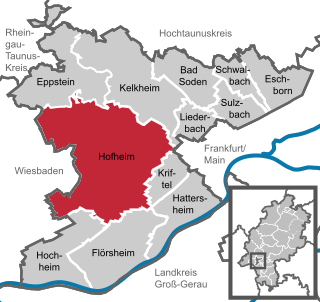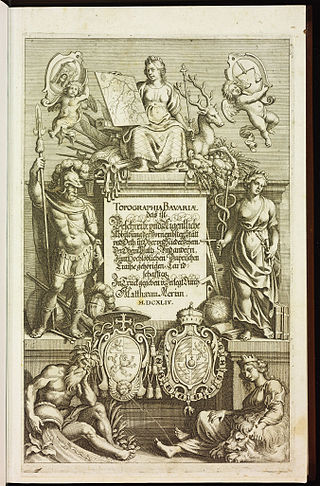| |||||
| Decades: | |||||
|---|---|---|---|---|---|
| See also: | Other events of 1650 History of Germany • Timeline • Years | ||||
Events from the year 1650 in Germany .
| |||||
| Decades: | |||||
|---|---|---|---|---|---|
| See also: | Other events of 1650 History of Germany • Timeline • Years | ||||
Events from the year 1650 in Germany .
Topographia Bohemiae, Moraviae et Silesiae in Topographia Germaniae is published

Matthäus Merian der Ältere was a Swiss-born engraver who worked in Frankfurt, Germany for most of his career, where he also ran a publishing house. He was a member of the patrician Basel Merian family.

Unterwalden, translated from the Latin inter silvas, is the old name of a forest-canton of the Old Swiss Confederacy in central Switzerland, south of Lake Lucerne, consisting of two valleys or Talschaften, now two separate Swiss cantons, Obwalden and Nidwalden.

Dalhem is a municipality of Wallonia located in the province of Liège, Belgium.

Johann Weikhard Freiherr von Valvasor or Johann Weichard Freiherr von Valvasor or simply Valvasor was a natural historian and polymath from Carniola, present-day Slovenia, and a fellow of the Royal Society in London.

Hofheim is the administrative centre of Main-Taunus-Kreis district, in the south of the German state of Hesse. Its population in September 2020 was 39,946.

Willem Janszoon Blaeu, also abbreviated to Willem Jansz. Blaeu, was a Dutch cartographer, atlas maker, and publisher. Along with his son Johannes Blaeu, Willem is considered one of the notable figures of the Netherlandish or Dutch school of cartography during its golden age in the 16th and 17th centuries.

Ravne Castle is a castle near the town of Ravne na Koroškem, in the Carinthia region of northern Slovenia.

Ederney is a village situated primarily in the townlands of Drumkeen and of Ederny in County Fermanagh, Northern Ireland.

Cambrésis is a former pagus, county and prince-bishopric of the medieval Holy Roman Empire that was annexed to the Kingdom of France in 1679. It is now regarded as one of the "natural regions" of France, and roughly equivalent to the Arrondissement of Cambrai in department Nord. The capital of Cambrésis was Cambrai. Originally ruled by a dynasty of counts, Cambrésis became a prince-bishopric in 1007, comparable to the Prince-Bishopric of Liège and the Prince-Bishopric of Utrecht. It encompassed the territory in which the bishop of Cambrai had secular authority.
Events from the year 1185 in Ireland.
The Synod of Cashel of 1172, also known as the Second Synod of Cashel, was assembled at Cashel at the request of Henry II of England shortly after his arrival in Ireland in October 1171. The synod sought to regulate some affairs of the church in Ireland and to condemn some abuses, bringing the church more into alignment with the Roman Rite. As such it can be seen as a continuation and part of the Irish church reform of the twelfth century, with the first synod of Cashel, the Synod of Rathbreasail and the Synod of Kells, slowly embracing the Gregorian Reforms. The extent to which the synod set the direction for the relationship between the English and the Irish church has been the subject of scholarly debate. Stephen J. McCormick described the synod as one of the most important events of this period of Irish history.

Trautenfels Castle is a palace located in the district of Liezen in Styria. It lies directly on the Enns at 673m in the municipality Pürgg-Trautenfels on a cliff protrusion at the foot of the Grimming.

Georg Matthäus Vischer was an Austrian topographer, cartographer, engraver and parish priest in Leonstein and Vienna.
Lauenstein is a village in the municipality of Salzhemmendorf in the Lower Saxon district of Hameln-Pyrmont in north Germany. It has about 2,100 inhabitants.

Martin Zeiler was a Baroque era German author.

The Kloster Mariensee is an Evangelical Lutheran women's convent in Mariensee, a district of Neustadt am Rübenberge close to Hanover. It is one of five Calenberg Convents, which are administered by the Klosterkammer Hannover.

Topographia Germaniae is a multi-volume series of books created by engraver Matthäus Merian and writer Martin Zeiler, and published in Frankfurt in 38 parts. Engravers Wenceslaus Hollar, Caspar Merian, and Matthäus Merian Jr. also contributed illustrations. In the 1960s Bärenreiter-Verlag reproduced the work.

Topographia Galliae (1655–1661) is a German-language series of illustrated books created by engraver Matthäus Merian and writer Martin Zeiler, and published in Frankfurt. It describes cities and towns in 17th-century France. Wenceslaus Hollar also contributed to its engravings.

Landsberg Castle is a ruined hillside castle on the hill of Moschellandsberg near the town of Obermoschel in the German state of Rhineland-Palatinate. It may be hired out for private events.

Schloss Westerburg, first recorded in 1192, but probably built earlier, is situated in the town of Westerburg in the forested hills of the Westerwald and is on the site of an older castle dating to the 12th century. The latter belonged to the counts of Leiningen but was transferred to the House of Runkel as the result of the marriage of Siegfried III of Runkel to a daughter of the House of Leiningen in the early 13th century. In the first half of the 13th century the castle was the seat of the lords of Westerburg, who had split off from the House of Runkel by 1288 with Henry I of Westerburg.